240 Seiten
210 Abbildungen
Großformat 24,5×32,5 cm,
schweres Bilderdruckpapier,
durchgehend fünffarbig gedruckt,
gebunden mit amerikanischem Schutzumschlag,
mit einem Vorwort und Interviews von Fritz Franz Vogel
und einem Text von Linn Schumacher
Preis: 60 Euro, da beim Verlag vergriffen (alter Preis 49,90 Euro)
ISBN: 978–3–89602–769-6
Schwarzkopf & Schwarzkopf Verlag, 2007
direkt hier bestellen: info@thomaskarsten.com
Hier ein kleines Shooting mit Bianca, 2007.
MODEL YEARS Der neue Bildband von Thomas Karsten
Der hochwertige Bildband »Model Years« zeigt anspruchsvolle Aktfotografien von jungen Frauen zwischen 20 und 25 Jahren. Der renommierte Fotograf Thomas Karsten porträtiert eine Generation junger Frauen, die selbstsicher zu ihrer Nacktheit stehen.
Ganz bewusst entzieht sich Karsten bei der Auswahl seiner Modelle dem Druck der Norm: Nicht alle haben Modelmaße. Dem Fotografen gelingt es, seinen Modellen in die Seele zu schauen und die individuelle Schönheit jeder Einzelnen abzubilden. Gerade durch die Eigenständigkeit der Modelle gewinnt der Fotoband an Originalität und Frische, und die Nacktheit erhält ihre Natürlichkeit zurück – ohne falsche Scham. Die kräftigen Farben der Bilder machen das Durchblättern zu einem Genuss, gleichzeitig spiegeln sie das Selbstbewusstsein der jungen Frauen, die über ihre eigene Sexualität bestimmen und es genießen, sich in erotischen Posen zu präsentieren. Die Aufnahmen sind eine Hommage an ihre Schönheit und Vitalität!
Der abwechslungsreiche Fotoband umfasst zweihundert Abbildungen und ist durchgehend fünffarbig gedruckt.
»Model Years« is an exquisite book of artistic nude photography presenting young women aged 20 to 25. The renowned photographer Thomas Karsten portrays a generation of young women who are self-assured in their nakedness. Karsten has consciously chosen subjects who do not necessarily represent the norm. Not all of them have model figures. The photographer was able to successfully reveal the souls of these models and allow them to express their own unique character. It is because of this freedom that the book is fresh and original, lending the nudity a naturalness without the false modesty. It’s a pleasure to leaf through these colourful pages of self-confident young women with full control over their own sexuality. They are obviously enjoying themselves being photographed in erotic nudity. The pictures are homage to their beauty and vitality.
The 200 full-colour photography book covers many facets of modern sexuality.
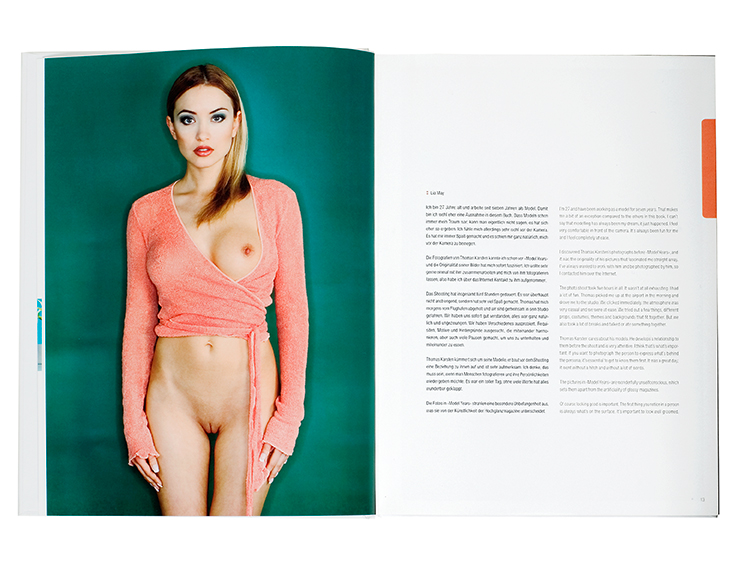
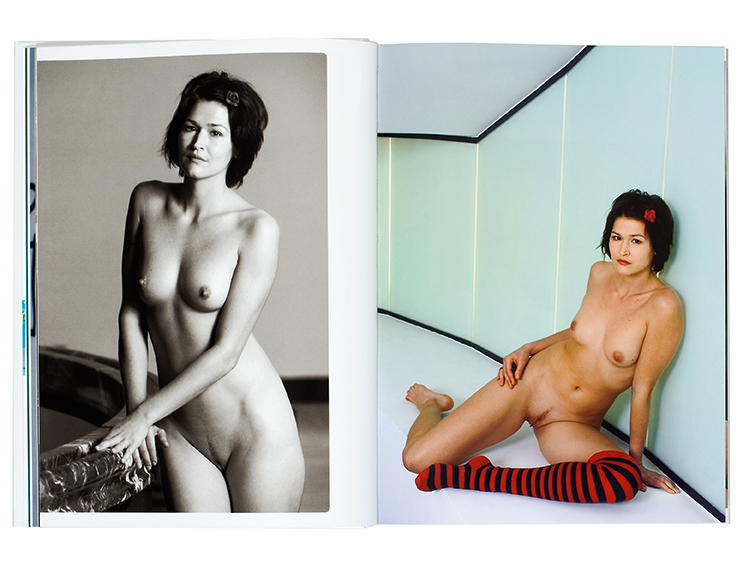
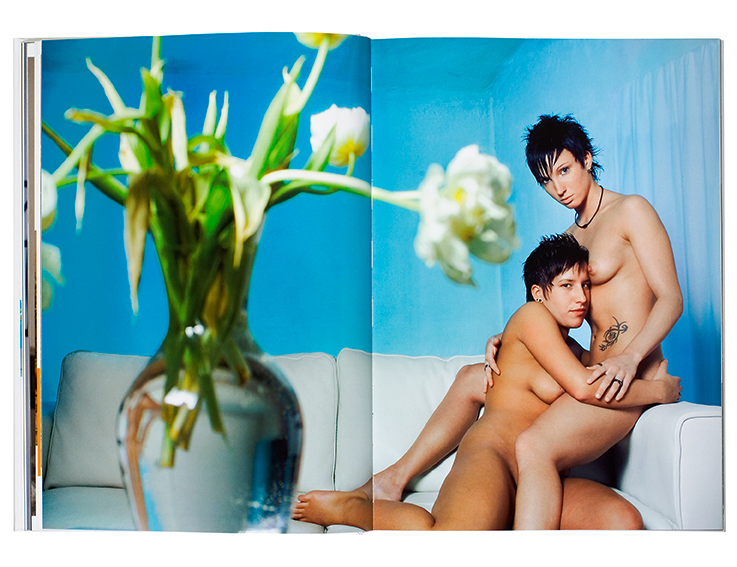
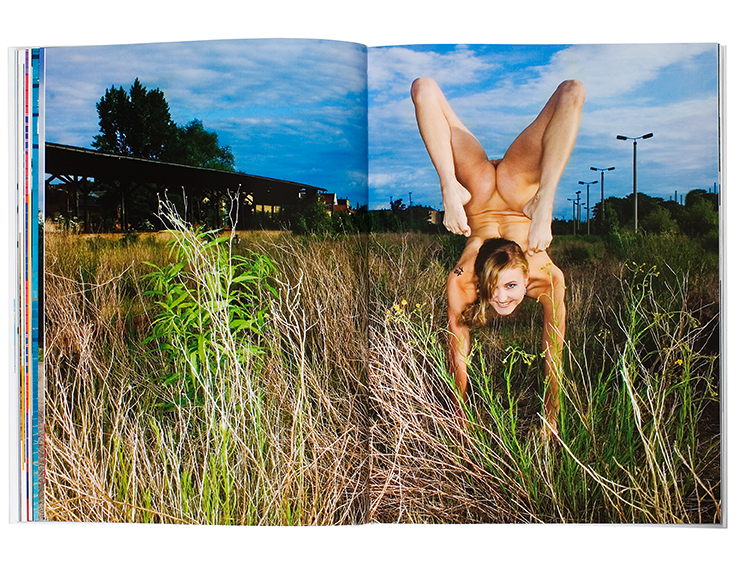
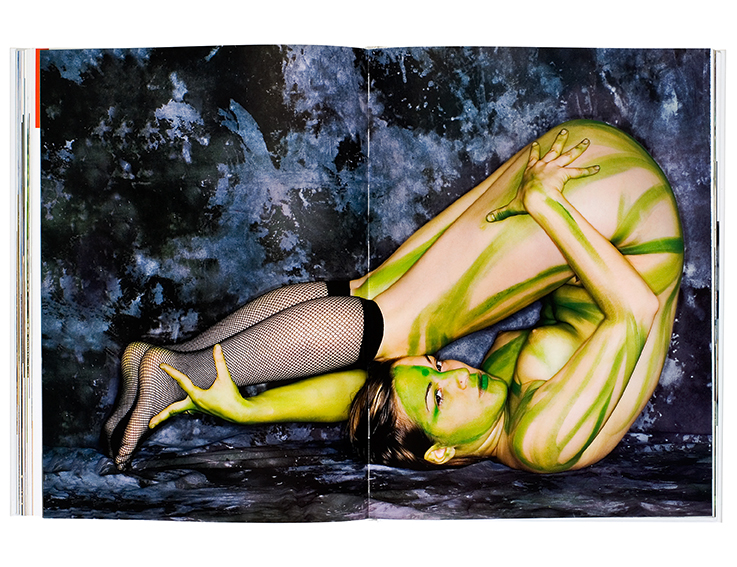
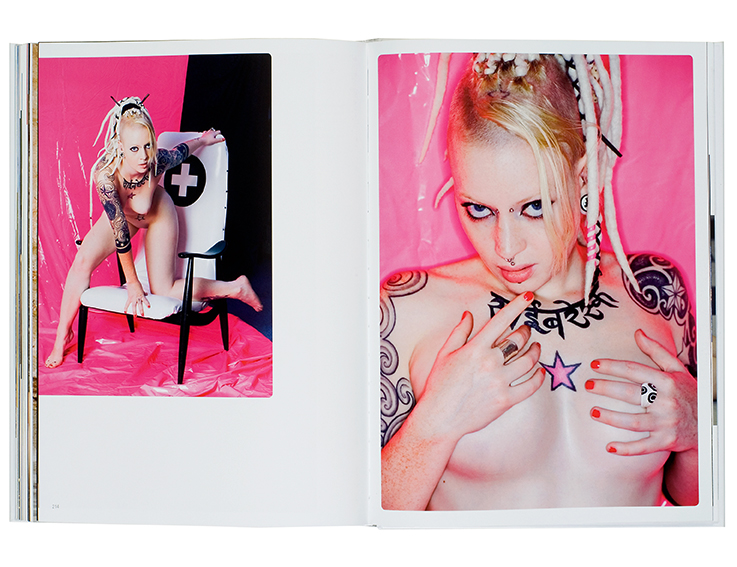
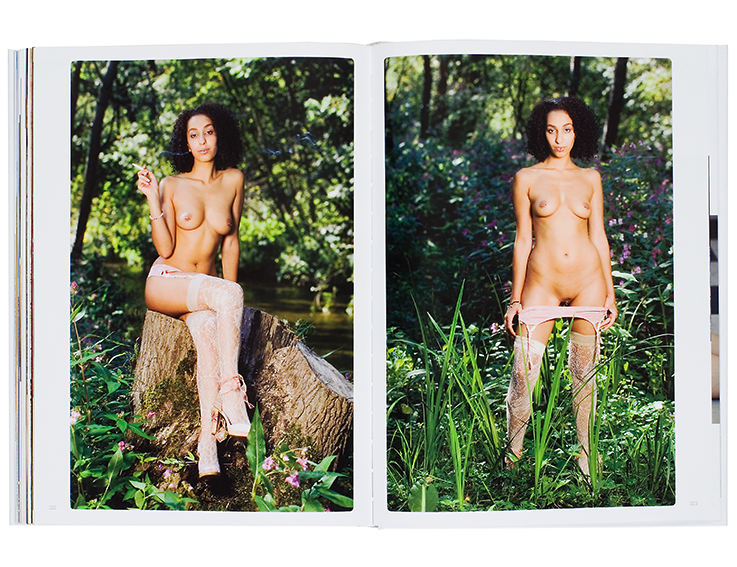
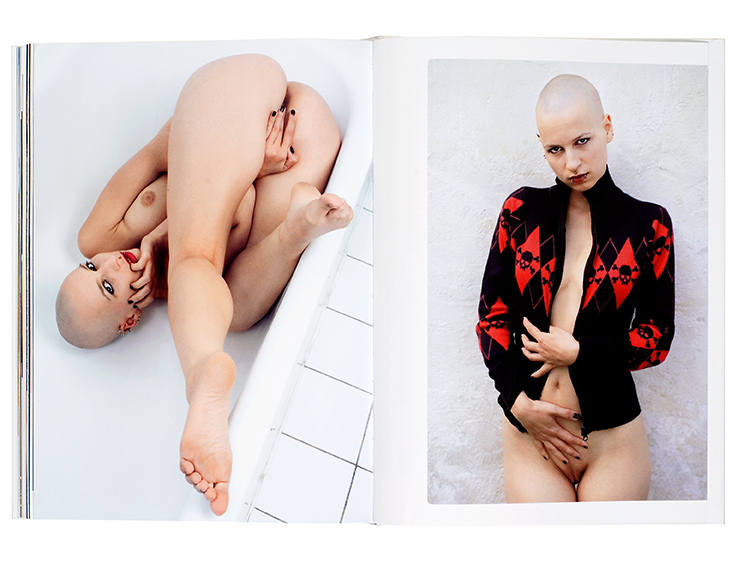
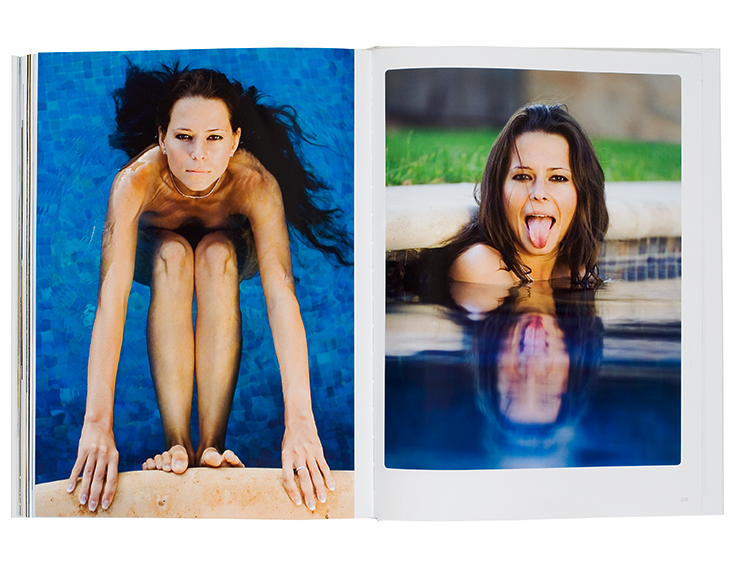
SCHÖN NACKT
Deine Brüste sind wie zwei Zicklein,
Zwillingsjunge der Gazelle.
…
will mich freun an deinen Brüsten,
welche reifen Trauben gleichen.
…
Du bist lieblich, meine Freundin,
und kein Fehl ist an dir!
Das Hohelied Salomos: DIE BIBEL in heutigem Deutsch.
Die Gute Nachricht des Alten und neuen Testaments.
Deutsche Bibelgesellschaft, Stuttgart, 1992
Nacktheit fasziniert, und zwar nicht nur die Außenstehenden, die Angezogenen, sondern weit mehr die Nackten selbst. Dies geht aus den Gesprächen hervor, die ich mit jungen Erwachsenen führte. Ob man sich vor einer Kamera nackt auszieht, oder doch nicht oder vielleicht später, oder dann nicht mehr – das scheinen Fragen zu sein, die sich Frauen dann und wann stellen. Nicht nur diejenigen, die Aktfotos machen, haben dazu ihre eigene Meinung, meist natürlich eine positive, sondern auch unbeteiligte Frauen. Letztere äußern sich zum Teil klarer, gerade weil sie sich aus Überzeugung nicht fotografieren lassen wollen. Sie halten ihren Körper bedeckt, weil sie die Entblößung mit Unmoral gleichsetzen. Dabei sind heute weit weniger moralische Altlasten für das oppositionelle Gebaren verantwortlich, als viel mehr die Einschätzung über die eigene Attraktivität. Schönheit, Jugendlichkeit, Sportlichkeit fördern nicht nur die Gesundheit, sondern auch die Bereitschaft, nackt zu posieren. Aktfotografie kann als ein Reflex auf das individuelle Körperbewusstsein gesehen werden.
Dabei geht es letztlich nicht mehr um ein Posieren, wie man das noch aus älterer Fotografie, vor allem aus Aktstudien, kennt. Zwar wird diese Art von Fotografie noch landauf, landab betrieben, indem ambitionierte Hobbyfotografen junge Modelle suchen, sie pro Stunde bezahlen, um ihren jugendlich-straffen Körper ins richtige Licht zu rücken. Diese Aufnahmen erscheinen dann in Hobbyzeitschriften oder auf Websites von Foto-Communities mit allen Angaben technischer Rahmenbedingungen. Diese formalisierte Fotografie ist aber nicht das Feld von Thomas Karsten. Er bietet weit mehr als die Fleischlichkeit des Leibes, nämlich eine Plattform, damit sich die Menschen vor seiner Kamera austoben, ausleben, inszenieren, ja, eigenwillig erfinden können.
Es sind biografische Beweggründe, Launen und Lebensentwürfe, die hier verwirklicht werden. Die Menschen gehen zum Fotografen, um etwas über sich zu lernen, in Erfahrung zu bringen. Der Fotograf ist sozusagen das Medium, das Selbstbewusstsein zu entdecken. Es sind Momente, in denen die Frauen sich nicht nur der Kamera gegenüber öffnen, sondern auch etwas mit sich klären wollen. Sie finden zu ihrem Körper, sie erkennen ihre Schwächen und Stärken. Die Bilder sind Zeugnis einer biografischen Selbsterkenntnis und Stellungnahme – eine gar nicht so leichte Aufgabe angesichts der durch Glamour-Postillen global verbreiteten Schönheitsideale.
Sich auszuprobieren gehört in die Adoleszenz. Während sich junge Männer eher dem dumm-dreisten Geschwindigkeitsrausch und dem lauten Gelage verschreiben, ihre Männlichkeit also in Testosteron-Exzessen unter Beweis stellen, steht bei den jungen Frauen meist eine andere Erlebenshaltung im Vordergrund. Das Interesse an Kleidern, der Hang und Zwang zum Shopping, die Fixierung auf den Körperausdruck etc. verdichten sich zu einem Katalog körperanalytischer Fragen (von dem viele dann gar nicht mehr loskommen): Wie sehe ich heute aus, wie wirke ich, was passt zu mir, wie verführe ich, wie fühle ich mich, wie spüre ich Intimität, wie fühlt sich die Haut einer andern Frau an usw.
Der Körperbezug, das ist leicht festzustellen, ist bei Frauen stärker als bei Männern. Der Körper war von jeher ein Bezugspunkt weiblicher Kommunikation und als solcher wichtig für die Selbstfindung und -darstellung. Daraus ergeben sich Neugier und die Wissbegierde an der weiblichen Oberfläche.
Dass der Mann seinerseits ebenfalls den weiblichen Körper als Referenzpunkt männlicher Kommunikation wählte – wenn auch aus anderen Interessen –, gipfelte in einem stetig zunehmenden Körperkult, der sich durch alle Gesellschaftsschichten und Kulturen zieht. Diese Körperkultur, die Anfang des zwanzigsten Jahrhunderts noch eher von Männern initiiert wurde, wird seit über zwei Generationen zumeist von Frauen aufs Tapet gebracht, von ihnen mit Sexismus-Vorwürfen torpediert oder, im Sinne einer Retourkutsche auf die Feminismusdebatten der siebziger und achtziger Jahre, von jungen Ausziehwilligen erneut als individuelle Freiheit verteidigt (siehe Bauchnabel-Freiheiten der Miss-Sixty-Fraktion). Ein Blick in Modezeitschriften und auf Plakate verweist auf das gesellschaftlich-mediale Zusammenspiel von Sinnlichkeit und Jugendlichkeit, Glamour und Glitzerwelt, Unschuld und Extravaganz, Sport und Erotik.
Der weibliche Körper als Projektionsfläche umfasst heute praktisch jedes Alter: Teenies und Girlies, Missen und Musen, Schönheitsköniginnen und Starlets, die perfekte Mutter, die reife Geschäftsfrau, die liebevolle Großmutter, die weise Alte. Was vor hundert Jahren noch als Frechdachs oder mit einem Schuss Laszivität als Fräulein Backfisch oder Wildfang durchging, ist längst bloß noch ein Andenken an eine »gute alte Zeit«. Die jungen Frauen probieren sich aus … Selbstdarstellung, Rollen, Laufsteg, modeln … Da und dort schimmern Modelle durch. Rollenfiguren wie Venus, Ophelia, Eva, Baubo oder Aphrodite werden mehr oder weniger bewusst in Attitüde und Haltung zitiert. Es werden Anleihen gemacht beim Vamp, bei der Femme fatale, bei der Nixe, beim Playboy-Bunny und bei der leichten Muse. Das vermeintlich Natürliche ist stets auch etwas Gemachtes, Geformtes und In-Szene-Gesetztes, gespeist aus dem Reservoir der Kultur- und Geistesgeschichte.
All diese Teststreifen und Lackmuspapiere haben einen gemeinsamen Nenner: die Selbstbestimmung über den eigenen Körper und den weiteren Lebenslauf. Wenn man mit 20 Jahren seine Haut zu Markte trägt, dann ist die Reibungsfläche programmiert. Vielleicht entflieht man in gewissem Maße den elterlichen Zwängen, ihren Vorschriften und Kontrollen. Doch stellt die Gesellschaft selbst genügend Vorbilder zur Verfügung, die mit ihrer blinkenden Scheinwelt für die meisten unerreichbar bleiben, auch wenn sie einen stets präsenten Bezugspunkt darstellen. All diese perfekt ausstaffierten und ausgeleuchteten Subjekte füllen den öffentlichen Nahraum mit betörender Nacktheit und gespielter Schamlosigkeit. In ihrem Überformat mehren sie unser schlechtes Gewissen hinsichtlich unseres Aussehens und unseres unsportlichen Freizeitverhaltens und packen uns an der immer lebendigen Eitelkeit. Mit dem kleinen Unterschied, dass die Werbung auf immer neue Ware und formbares Frischfleisch zurückgreifen kann, während wir von Tag zu Tag der Vanitas, der nie still stehenden Vergänglichkeit, unterlegen sind und uns womöglich ernsthaft mit Body Mass Index, Botox und Busenlifting beschäftigen. Deshalb ist es von Vorteil, möglichst schnell ein wahres, gutes, schönes Bild von sich anfertigen zu lassen, bevor die Zeit verronnen und das Ansinnen vergessen sind.
Dass der Fotograf nicht nur ein abbildender ist, sondern auch einer, der Wünsche erfüllt, weil er das sichtbare Kapital in einer visualisierten Welt ins richtige Licht rückt, ist nicht von der Hand zu weisen. Seine schönen, bisweilen da und dort digital geschönten Resultate entschädigen dafür, dass man nicht im Jetset geboren ist. Die Bilder sind Ausweis einer Lebensfreude, ein Bekenntnis zur Stimmungslage und eine Imagekampagne für das eigene, stets neu zu erfindende Ich. Mit den Bildern bin ich wer, weil ich es wert bin, abgelichtet worden zu sein. Dieser latente Geniekult steckt in den autobiografischen Bildern, und fast scheint es so, als ob frau sich heute lieber nackt dem Fotografen anvertraut, als altertümlich Tagebuch zu schreiben. Beides zeugt von Intimität und setzt individuelle Erkenntnisse frei. Damit wird offensichtlich, dass ein Wandel stattgefunden hat, vom stillen Kämmerlein, in dem Probleme schreibend bewältigt werden, hin zum offerierten Podest, auf dem das narzisstische Ich öffentlich verhandelt, verglichen und beurteilt werden will. Was im Tagebuch noch toleriert wird, nämlich Tintenkleckse und Tränenflecken, ist auf dem öffentlichen Podium geächtet. Hier ist alles rein und sauber, hygienisch rasiert, schamhaarlos glücklich. Die glatte Oberfläche und makellose Retusche – das Tierisch-Wilde ist nur modische Masche – versprechen mehr Erotik, Anziehung, Sexappeal. Mehr noch: Durch die Bilder wird eine Spur in die Zukunft gelegt, die sich zu einer kurzzeitigen Celebrity entwickeln und auswachsen kann. Denn wer narzisstisch und extrovertiert veranlagt ist, den/die drängt es nach einem Beruf im Rampenlicht, wo er/sie diese Neigung ausleben kann. Doch es geht hier nicht um Psychologie, auch wenn ein nackter Frauenkörper jede Menge Gelüste und Begehren freisetzen und Lebensgeister in Wallung bringen kann.
Einen gesellschaftlichen Nachweis, ein kulturelles Resultat, haben diese Belles du jour zwar noch kaum realisiert; noch sind sie erst Körper, schön, bewundernswert, anzüglich, jedoch unberührbar. Nehmen wir diese Fotografien jenseits der betörenden Sehnsucht, die sie zu erzeugen vermögen, auch als Spiel einer freizügigen jungen Erwachsenenwelt. Versuchen wir keine Kulturkritik anzuwenden, angesichts einer Gesellschaft, in der die Vielzahl nackter Waren ob des Überflusses kaum mehr Begehren erzeugt, sondern im Gegenteil eher etwas Groteskes darstellt. Lesen wir unvoreingenommen die Einschätzungen, das Selbstverständnis dieser nackten H&M-Generation.
Eine letzte Beobachtung ist zu treffen: Kultur- und fotohistorisch fällt auf, dass in diesem Buch erstmalig in der Geschichte des Aktfotobuches eine globalisierte Welt junger Erwachsener vorgeführt wird. Diese jungen Frauen leben als Vertreter von Zweit- und Drittgenerationen von Einwanderern unter uns und haben sich nolens volens ihre Rechte erkämpft. Zwar wird die eigentliche Herkunft aus Asien, Russland, Nord-, Mittel- und Südeuropa, aus Nord- und Schwarzafrika nur halbwegs mit dem Vornamen erschlossen, doch findet sich bei genauerem Hinsehen eine ethnische Vielfalt in Gesicht und Hautfarbe. Zwar wissen wir, dass ein nacktes Stelldichein ethnischer Verschiedenartigkeit noch nicht der Beweis einer Integration ist, doch ist bemerkenswert, dass das Tabu der Nacktheit so weit über den zentraleuropäischen Zirkel hinauszuwachsen vermochte.
Wie sich junge Frauen hier in Szene setzen, verdient Respekt.
Fritz Franz Vogel, Fotohistoriker
www.fritzfranzvogel.ch
PRETTY NAKED
Your two breasts are like two fawns,
like twin fawns of a gazelle.
…
May your breasts be like the clusters of the vine.
…
All beautiful you are, my darling;
there is no flaw in you.
The Song of Soloman: The Bible in Contemporary German
Die Gute Nachricht des Alten und neuen Testaments
(Good News from the Old and New Testaments.)
Deutsche Bibelgesellschaft. (The German Bible Society) Stuttgart, 1992
It appears that nudity not only intrigues the observer, but the nude to
a far greater extent. Interviews confirm that young women at some
point contemplate whether to appear naked in front of a camera or
not. And it is not only those who don’t mind being photographed in the
nude who voice an opinion. Some women distinctly choose never to be
photographed in the nude. They keep their bodies covered because
they equate bareness with immorality. Yet the assessment of one’s own
beauty is far more at fault for opposing nudity than yesterday’s societal
confines. Beauty, youthfulness and fitness promote not only health but
also a willingness to pose in the nude. Therefore nude photography can
be viewed as a natural reflex of an individual’s body-awareness.
Ultimately we are not talking about the postures as we know them from
earlier photography, or nude studies. This type of picture-making is still
common all over the country; determined hobby photographers search
for youthful models with beautiful bodies and pay them by the hour. The
photos appear in hobby mags or on photo community websites stating
all the technical settings and specifications. This type of photography
is not Thomas Karsten’s field. He presents far more than just a body in
carnal poses, he offers a platform for individual expression. The model
is given the freedom to have a ball, to live an adventure, to show off,
yes, even to find its own style!
Personal motives, moods and life designs are being realized here.
People work with a photographer to learn and experience something
about themselves. The photographer is the medium, so to speak,
on their journey to self-discovery. These women do not only want to
open themselves to the camera; they want to clarify something within
themselves. They accept their bodies and realize their own strengths
and weaknesses. These photos are witness to an autobiographical
statement and self-conception – not a very simple task in the face of
glamour magazines all over the world postulating beauty ideals.
Testing oneself is an essential part of adolescence. While young men
are more devoted to brazen speed thrills and loud drinking binges
to prove their masculinity awash in an excess of testosterone, young
women are given to express themselves in a different way. A heightened
interest in clothing, a fondness for shopping, a figure fixation, all build
to body-obsession issues (which can turn into a serious problem): Does
this look right on me? How do people see me? What suits me? How
can I be seductive? How do I feel? How do I experience intimacy? What
does the skin of another woman feel like? and so on.
It is easy to conclude that a woman’s relationship to her body is stronger
than a man’s. The body has always been a reference point of female
communication and is therefore important for identification and selfexpression.
From this a curiosity about the female surface and a thirst
for knowledge emerges.
Because the male in his own way views the female body as a reference
point for male communication (albeit with a different agenda) a steadily
growing cult of the body spanning all cultures and social stratum is
peaking. This physical culture, which was primarily initiated by men at
the start of the 20th century, had been taken up again by women of the
70s and 80s and torpedoed with accusations of sexism. As a tit for tat
knee-jerk response to this feminist era, the cult is now being defended
as individual freedom by the young who are willing to drop their clothes
(read: young belly-button fashion exhibitionists). A glance in any fashion
magazine or at any poster reveals the interplay of sensuality and youthfulness,
glamour and glitter, innocence and extravagance, and sports
and eroticism.
Today the female body is being used as a projection screen for practically
every age type: teens and girlies, misses and muses, beauty queens
and starlets, the perfect mother, the mature business woman, the
loving grandmother, the wise golden-aged. What passed a hundred
years ago as cheeky or perhaps as young flapper or wild child is now a
mere souvenir of the »olden days«. Young women are taking chances…
Promoting their public image in roles, on the runway, in modelling…
The Venus, Ophelia, Eve, Baubo and Aphrodite attitude role model are
more or less summoned with a mixture of the vamp, the femme fatale,
the water nymph, the playboy bunny and the art muse. The »natural«
look is therefore in actuality something performed, shaped and chic,
springing from cultural and intellectual sources.
All these indicators have one common denominator: autonomy over
one’s own body and the subsequent course of life. If the 20-year-old
takes her own skin to market conflict is predictable. Perhaps she wants
to escape parental pressures, regulations and controls. Nevertheless,
society itself sets enough examples of a glittering illusionary world that
almost always remains unattainable even though it is the omnipresent
reference point. All these perfectly decked out and illuminated subjects
fill public spaces with infatuating nakedness and studied shamelessness.
In its larger-than-life format, our guilty conscience increases in
proportion to our appearance, our non-athletic behaviour, and attacks
our ubiquitous vanity. There is one small matter not to be forgotten:
Advertising has a huge reserve of fresh malleable flesh. Meanwhile,
we feel inferior to the beautiful people while seriously assessing our
body mass index, and maybe considering Botox injections or breast
implants. That’s why it is perhaps beneficial to take a true, good and
beautiful picture of oneself as soon as possible, before time passes
and the suggestion is best forgotten.
It can’t be denied that the photographer does not only take pictures but
also fulfils dreams: He takes one‘s visible assets in a visual world and
puts them in the right light. The digitally enhanced results sometimes
compensate for the fact that one was not born into the jet set. The
pictures are evidence of a joie de vivre, a belief in the current frame of
mind and an image campaign for the continuously reconfiguring self.
Because of these pictures I matter – I was worth it to be photographed.
This latent cult of genius is concealed in the autobiographical pictures;
it almost seems as if one would rather trust the photographer with one’s
nakedness than write an archaic diary. Both create intimacy and allow
for individual discoveries, but there has been a transition: away from the
quiet chamber in which problems were managed in the written form on
to the public pedestal, from which the narcissistic self publicly demands
negotiation, comparison and assessment. What is still tolerated in the
diary (ink spots and tear stains), is ostracised on the public podium.
Here everything is pure and clean, hygienically shaved, pubic-hairless
happy. Smooth surfaces and impeccable retouching (naturalness was
only a fad) promise more eroticism, attraction and sex appeal. But
there’s more: The pictures could lead to short-lived celebrity status.
Extroverted narcissists need to be in the limelight where they can act
out this affinity. But we’re not talking about psychology here, even
though a naked woman’s body has to do with cravings and desires
enough to make the blood course faster.
Though these belles du jour have hardly made their mark, a cultural
outcome if you will, on society, they are still first of all only bodies,
beautiful, admirable, personal, but untouchable. Let us perceive these
photographs as going beyond the beguiling desire that they seem to
create, and as a game in a permissive young adult world. Let us try
not to apply cultural critique in the face of a society where excess
nakedness scarcely creates desire but merely seems grotesque. Let
us remain unbiased when inputting the assessments, the self-image
of this naked MTV Generation.
One more observation needs to be made: Looking at it from a cultural
and photographic history point of view, it is evident that for the first time
in nude photography, this very book presents young adults of a globalized
world. These young women, second- and third-generation immigrants
living among us, had to struggle for their rights – if they wanted to or
not. Though their first names only sometimes reveal their ethnic origins
(Asia, Russia, North, Middle and South Europe, North and Central Africa),
cultural diversity shows with closer examination. Though we know that a
naked rendezvous with ethnic diversity isn’t exactly proof of integration,
it is still remarkable that the taboo of nudity has managed to reach far
beyond the boundaries of Central Europe.
The way these young women put on a show earns our respect.
Historian of photography
www.fritzfranzvogel.ch
: Lia May
Ich bin 27 Jahre alt und arbeite seit sieben Jahren als Model. Damit
bin ich wohl eher eine Ausnahme in diesem Buch. Dass Modeln schon
immer mein Traum war, kann man eigentlich nicht sagen, es hat sich
eher so ergeben. Ich fühle mich allerdings sehr wohl vor der Kamera.
Es hat mir immer Spaß gemacht und es schien mir ganz natürlich, mich
vor der Kamera zu bewegen.
Die Fotografien von Thomas Karsten kannte ich schon vor »Model Years«
und die Originalität seiner Bilder hat mich sofort fasziniert. Ich wollte sehr
gerne einmal mit ihm zusammenarbeiten und mich von ihm fotografieren
lassen, also habe ich übers Internet Kontakt zu ihm aufgenommen.
Das Shooting hat insgesamt fünf Stunden gedauert. Es war überhaupt
nicht anstrengend, sondern hat sehr viel Spaß gemacht. Thomas hat mich
morgens vom Flughafen abgeholt und wir sind gemeinsam in sein Studio
gefahren. Wir haben uns sofort gut verstanden, alles war ganz natürlich
und ungezwungen. Wir haben Verschiedenes ausprobiert, Requisiten,
Motive und Hintergründe ausgesucht, die miteinander harmonieren,
aber auch viele Pausen gemacht, um uns zu unterhalten und
miteinander zu essen.
Thomas Karsten kümmert sich um seine Modelle, er baut vor dem Shooting
eine Beziehung zu ihnen auf und ist sehr aufmerksam. Ich denke, das
muss sein, wenn man Menschen fotografieren und ihre Persönlichkeiten
wiedergeben möchte. Es war ein toller Tag, ohne viele Worte hat alles
wunderbar geklappt.
Die Fotos in »Model Years« strahlen eine besondere Unbefangenheit
aus, die sich von der Künstlichkeit der Hochglanzmagazine abheben.
Natürlich ist gutes Aussehen wichtig. Wenn man jemanden kennenlernt,
schaut man immer erst mal auf das Äußere – gepflegt sein ist
wichtig, Kleidung, gute Manieren und wie man sich gibt, all dies ist von
Bedeutung. Es ist aber das Zusammenspiel, nicht nur Kleider machen
Leute. Wenn man jemanden kennenlernt, der toll aussieht, kann man
nach zehn Minuten trotzdem zu Tode gelangweilt sein. Aber im ersten
Moment ist das Äußere enorm wichtig, man wird abgecheckt beim
Vorstellungsgespräch, bestimmte Berufe kann man sogar nur ausüben,
wenn man gut aussieht.
Ich habe wirklich Achtung vor Thomas Karstens Kunst, da er auch Frauen
fotografiert, die keine professionellen Modelle sind und die nicht der
Norm entsprechen. Er fotografiert einfach Menschen, bringt dabei aber
das Schöne in ihnen zum Vorschein und das finde ich wunderbar.
Ich wohne mit einer sehr guten Freundin zusammen, die alle meine Bilder
begutachtet. Von den Bildern für »Model Years« war sie begeistert.
Sie bringen nicht nur die körperliche Schönheit der Modelle zum
Ausdruck, sondern sie haben auch menschliche Ausstrahlung und sind
nicht gekünstelt. Ich glaube, Thomas Karsten sieht in den Modellen die
Menschen. Das macht Kunst aus. Man fühlt sich bei ihm wohl und entspannt,
das ist ganz wichtig. Wenn man unentspannt ist, kann man keine
Fotos machen, das bringt nichts.
Was ich erotisch finde, ist vor allem die Ausstrahlung einer Person.
Ausstrahlung ist das A und O. Ein Lächeln, ein Blick können ungemein
erotisch sein. Ich bin eine Romantikerin. Versteckte Erotik, Blumen,
Spaziergänge am Meer, das mag ich. Mit einem geliebten Menschen
allein sein ist immer erotisch. Aber jeder Mensch ist vielfältig und hat
verschiedene Seiten. Ich bin auch ein wenig exhibitionistisch. Es macht
mir Spaß, meinen Körper zu zeigen.
Interview: Linn Schumacher
: Lia May
I’m 27 and have been working as a model for seven years. That makes
me a bit of an exception compared to the others in this book. I can’t
say that modelling has always been my dream, it just happened. I feel
very comfortable in front of the camera. It’s always been fun for me
and I feel completely at ease.
I discovered Thomas Karsten’s photographs before »Model Years«, and
it was the originality of his pictures that fascinated me straight away.
I’ve always wanted to work with him and be photographed by him, so
I contacted him over the Internet.
The photo shoot took five hours in all. It wasn’t at all exhausting. I had
a lot of fun. Thomas picked me up at the airport in the morning and
drove me to the studio. We clicked immediately, the atmosphere was
very casual and we were at ease. We tried out a few things, different
props, costumes, themes and backgrounds that fit together. But we
also took a lot of breaks and talked or ate something together.
Thomas Karsten cares about his models. He develops a relationship to
them before the shoot and is very attentive. I think that’s what’s important.
If you want to photograph the person to express what’s behind
the persona, it’s essential to get to know them first. It was a great day;
it went without a hitch and without a lot of words.
The pictures in »Model Years« are wonderfully unselfconscious, which
sets them apart from the artificiality of glossy magazines.
Of course looking good is important. The first thing you notice in a person
is always what’s on the surface. It’s important to look well groomed,
have nice clothes and good manners – all these are essential. But it’s
not just what’s outside that counts, it’s all of these things put together.
You could meet someone that looks fabulous and then be bored to
death ten minutes later. But still, first impressions are extremely important,
like a job interview for instance. Some professions depend on
how good you look.
I have a lot of respect for Thomas Karsten’s art because he includes
women who aren’t professional models or who don’t exactly represent
the typical woman. He brings out the beautiful in the ordinary people
he photographs. I think that’s pretty wonderful.
I live with a very good friend who thoroughly scrutinizes all of my photographs.
She was particularly excited about my »Model Years« pictures.
They not only bring out the physical beauty of the subject but they
reveal the human aspect. And they don’t seem fake. I believe Thomas
Karsten sees the person behind the facade. That’s the difference
between art and artificial. He makes you feel at ease and relaxed.
This is important, because if you aren’t relaxed then you can’t make
good photos at all.
I think what makes a person erotic is their aura or charisma. Charisma
is the be all and end all. That certain smile or look can be extremely
erotic. I happen to be a romantic. Veiled eroticism, flowers, a walk on
the beach – I like that. Being alone with a person you love is always
erotic. But then every person is multi-faceted – their personalities
have many sides. I am also a bit of the exhibitionist. I like showing my
body in public.
Interview: Linn Schumacher
Interviews
: Na klar, ich hab keine Topfigur. Es müssen ja auch nicht alle gleich aussehen.
: Of course I don’t have the best figure. There’s no reason for us all to look the same.
: Ein gutes Bild ist ein Blickfang. Der Blick verfängt, das ist meine körperliche Qualität und Attraktivität. Jetzt bin ich jung und da macht mir die Nacktheit nichts aus, denn ich mag meinen Körper wie er ist. Mit 50 stelle ich mich nur nackt vor die Kamera, wenn ich körperlich noch genauso attraktiv und verführerisch bin wie heute – also
wahrscheinlich nicht. Schönheit ist nämlich das Kriterium für Attraktivität.
: A good photo catches the eye. The gaze is caught; that’s my physical quality and attraction.
I’m young right now and my nakedness doesn’t bother me because I like my body the way it is. But at 50 I’d only let myself be photographed if my body is as attractive and
seductive as it is today – so I guess I won’t. Beauty is the main criterion for attractiveness.
: Für mich war das Fotoshooting eine Premiere. Es ist eine Momentaufnahme in meiner Biografie, und sie wird haften bleiben. Die Fotografien von Thomas sind eine künstlerische Arbeit und die kann nur in einer angenehmen Atmosphäre gedeihen. Er macht nicht nur schöne Fotos, er holt auch etwas aus den Menschen heraus, was
sie sonst nicht über sich erfahren.
For me the photo shoot was a premiere. It is a snapshot in my own biography that I will not soon forget. Thomas’ photographs are art and they can only thrive in an agreeable atmosphere. He not only takes beautiful photos, but he brings a part of the person into the open that they otherwise would not have
experienced about themselves.
: Klar rufe ich als Frau mit Glatze und Piercings Widerstand hervor. Ich fühle mich nicht unwohl, wenn ich auffalle. Das ist ein Teil von mir. In Berlin macht mich niemand an, in München fühle ich mich wie ein Alien und in Augsburg wurde ich als Nazi beschimpft. Es gibt eben kulturelle Unterschiede in der Wahrnehmung.
Der Exhibitionismus ist etwas, was ich über die Fotografie ausleben kann, denn da kann ich mitgestalten und kreativ sein. Es ist eine Plattform, mich selbst zu entdecken. Ich spiele nichts vor, sondern möchte zu meinen Grenzen vordringen, mich selbst erfahren. Insofern ist eine solche intime Bildarbeit auch ein Heilungsprozess, eine Narbenarbeit. Sie löst meine Barrieren, meine Hemmungen. Ein stimmiges Bild ist sozusagen ein Glücksmoment … oder anders gesagt, ein therapeutischer Erfolg.
: Sure, being a woman with piercings and a shaved head people react with rejection. I do not feel uncomfortable that I attract attention. It’s a part of what I am. In Berlin nobody notices me, in Munich I feel like an alien, and in Augsburg people call me a Nazi. This just shows the differences in cultural perception. Exhibitionism is something that I can use to express myself through the photographs, because I can be creative and help in their design. It is a platform I can use to discover myself. I am not acting – but want to go to test my own limits, to discover my inner self. In this way this type of intimate photography is a healing process, working on the scars in my life. It frees my barriers, my inhibitions. An eloquent photo is a stroke of luck … or in other words, a therapeutic success.
: Nacktbilder zu machen, macht mir nichts aus, denn ich war als Kind schon am FKK-Strand. Dank dieser Erfahrung mit meinen Eltern bin ich unverklemmt. Ich denke, dass man mit 20 nach dem eigenen Ausdruck sucht und zu sich selber findet. Es ist ja die so genannte Sturm-und-Drang-Zeit, wo sich der Mensch in verschiedenen Lebenslagen beweisen muss und daran reift. Auch Aktfotos gehören dazu. Ein Blick von außen ist manchmal ganz gut.
: I don’t mind allowing myself to be photographed naked, after all I went to nude beaches when I was still a kid. I am uninhibited because of having done this back then with my paren.